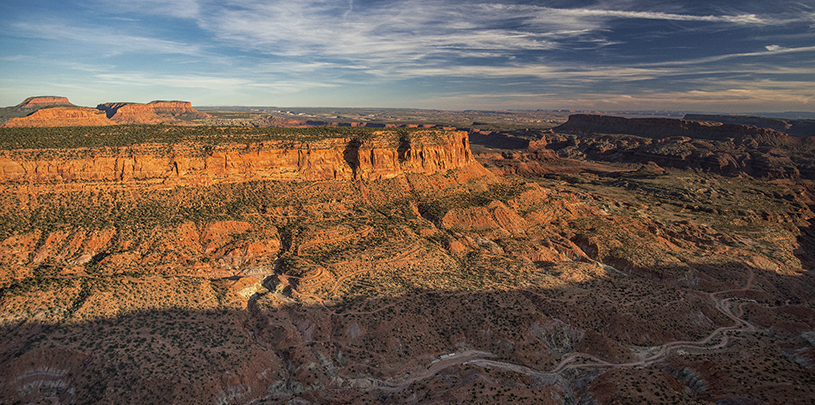
This time last year, Grand Staircase-Escalante National Monument was facing three proposals to remove large swaths of pinyon and juniper trees, and now there are none. The monument’s pinyon and juniper forests can breathe easier, at least for the time being, as the Bureau of Land Management (BLM) withdrew the last remaining project this January. But a month later, the agency released final resource management plans for the monument and lands President Trump cut from it, which allow even more destructive pinyon-juniper removal projects going forward.
Over 100,000 acres of trees spared
Removing pinyon and juniper trees from public lands is generally not a pretty sight. The trees are sometimes uprooted by a ship anchor chain dragged between two bulldozers (a technique called “chaining”), sending any wildlife that can make it out in time running for the hills. Or the trees are shredded into mulch from the top down with another piece of heavy machinery called a bullhog. The BLM provides various reasons for such activities, but when a proposal involves erasing the native trees and replacing them with exotic plants to feed cows, the apparent handout to private cattle operations becomes difficult to dismiss.
Replacing pinyon and juniper with exotic plants was one of our primary concerns with the BLM’s proposal to remove trees across more than 30,000 acres on the Skutumpah Terrace in Grand Staircase-Escalante National Monument. We challenged the BLM’s decision to move forward with this project, and, in September 2019, the Interior Department’s Board of Land Appeals ruled in our favor. The board found that the BLM failed to properly consider the project’s potential effects on migratory birds and that the planting of non-native seeds was not permitted under the then-current monument management plan. The rejected project was sent back to the BLM, and it hasn’t yet resurfaced.
The BLM had plans to remove pinyon and juniper elsewhere in the monument: across 13,000 acres in three cattle grazing allotments, and more than 90,000 acres in the Paria River watershed. But in the last few months, the BLM withdrew both of these proposals.
Although these efforts to remove pinyon and juniper have been stopped for now, we’re under no illusions that these concerning projects are gone for good. In fact, the new management plans for Grand Staircase-Escalante National Monument, and for the lands that Trump unlawfully removed from it, allow for even more destructive removal of pinyon and juniper, including chaining.
Management plans green light forest destruction
The use of chaining to remove pinyon and juniper trees was expressly prohibited in the monument’s previous management plan. But the new plans allow it for the explicit purpose of “improving” the land for cattle. The new plans also allow the seeding of exotic species, like alfalfa and flax, which are favorites of cattle.
Plus, with chaining you can say goodbye to the integrity of any cultural sites the BLM doesn’t know about when the bulldozers and chains come through, churning up the soil and burying the evidence.
What the BLM is proposing for pinyon and juniper forests is only one part of these short-sighted management plans. Learn about the other damage these management plans allow ›
READ: Final Bears Ears and Grand Staircase Management Plans Endanger Monuments ›
The fate of the monument’s pinyon and juniper forests
We recognize that pinyon and juniper trees have increased in number in the last 150 years, in some places growing where they did not previously, and in others becoming denser and more numerous. We are open to working collaboratively, using science-based approaches, to restore the natural balance of native plants and animals in select areas. But tearing out native trees to seed non-native plants for cattle is more akin to farming than restoring our natural landscapes.
While we advocate for any pinyon and juniper removal projects to take a science-based restoration approach, we will fight the implementation of destructive proposals that may come forward under the new management plans. We’re staying vigilant and could use your help.




